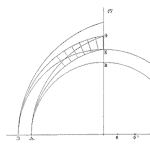
If 100 healthcare executives were polled about their definitions of “root cause analysis”, there would be 100 different answers. Here in is the problem, understanding the intent and power of Root Cause Analysis (RCA). For this reason, RCA is viewed as having either limited or phenomenal value to an organization. This article will seek to strip away the labels associated with RCA brands and focus on the processes, their results and how they are communicated (or miscommunicated) to executive management. Effective RCA efforts can fail because of their inability to demonstrate their value to the bottom-line of the organization. [Read more…]










